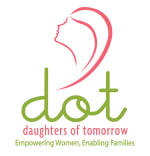An insightful exploration into recognizing and supporting autism spectrum disorder symptoms within educational institutions from preschool to universities.

Source: cnaluxury.channelnewsasia.com
Featured Charities
Jump To Section
- Identifying Autism Symptoms in the Classroom
- Impacts on Early Childhood Education
- Navigating Autism in Higher Education
- Creating Supportive Educational Environments
- Resources and Support Networks
Identifying Autism Symptoms in the Classroom
Autism Spectrum Disorder (ASD) can manifest in a variety of symptoms, and understanding these is crucial for educators. Knowledgeable teachers can identify behaviors like difficulty in social interactions, resistance to change, or intense focus on specific subjects. These signs can become apparent during a child's preschool years. Early identification allows for timely intervention and support.

Source: www.healthline.com
Impacts on Early Childhood Education
For children with ASD, the structure of preschool education can either hinder or foster development. A 'preschool near me' search should yield options that cater to diverse learning needs and provide an inclusive environment. This proactive approach in preschool can set the stage for continuous growth and can accommodate ASD symptoms effectively, enhancing the learning experience.
Navigating Autism in Higher Education
Transitioning to universities, which can be among the 'top universities in the world', presents new challenges for students with ASD. These institutions must strive for inclusivity, offering support services tailored to ASD symptoms. Students with ASD can thrive in higher education when given the right tools and understanding from the academic community.

Source: www.straitstimes.com
Creating Supportive Educational Environments
Fostering a supportive environment for students with ASD involves adapting teaching methods, creating sensory-friendly spaces, and training staff to recognize and respond to autism spectrum disorder symptoms. Albert Einstein, suspected of having had ASD, once said, 'It is the supreme art of the teacher to awaken joy in creative expression and knowledge.' Thus, educators play a pivotal role in nurturing the potential in every student.
Resources and Support Networks
Schools should provide resources and support networks for students with ASD and their families. Collaborative efforts between educational institutions, healthcare professionals, and community organizations can create a holistic support system. Moreover, awareness programs can help demystify autism spectrum disorder symptoms and foster a culture of empathy and understanding within the educational setting.
Featured Charities
Our methodology is not perfect, but improving rapidly. If you have spotted an inaccuracy, please contact us at support@give.asia
Givepedia is an initiative by the team at Give.Asia. We want to inspire more people to become givers in the world.
Subscribe to receive email updates on Givepedia and our blog.
Give.Asia is a Social Enterprise based in Singapore.
In partnership with 




